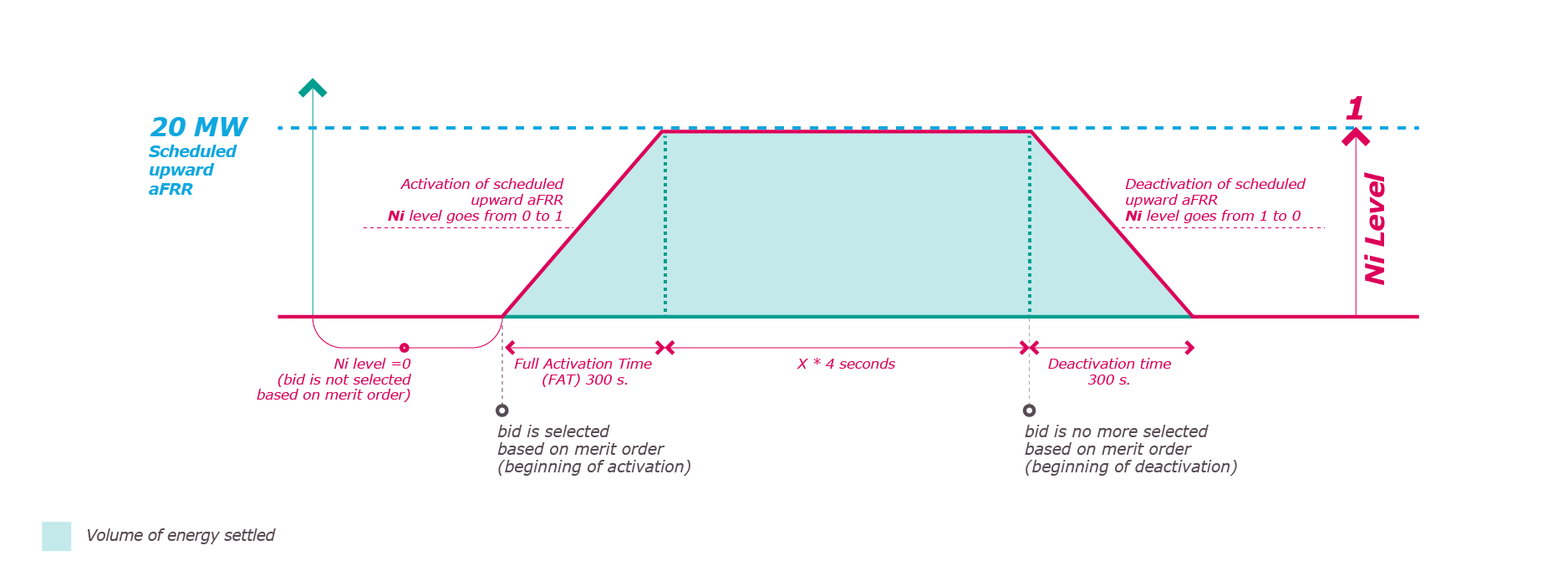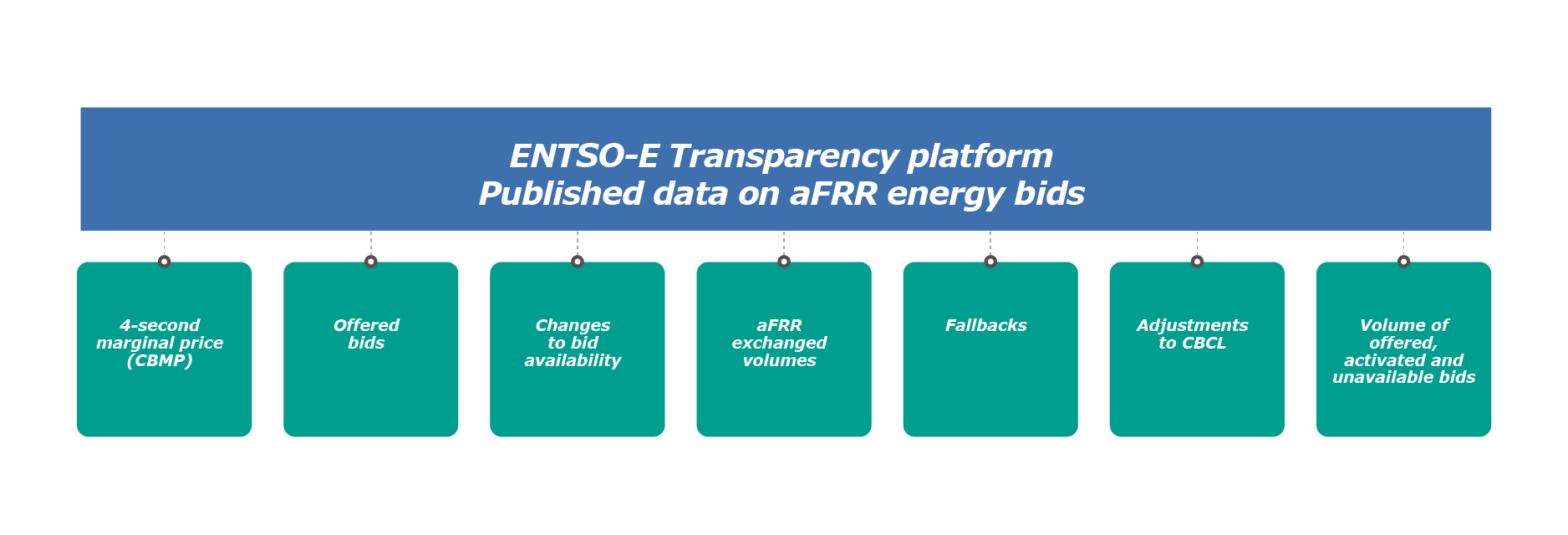Do you have an account?
Why create an account?
After creating an account you will :
- have access to the “favourites” feature,
- be able to download certain data published by RTE,
- have access to forms (PKI certificate, EIC code, Customer questionnaire - KYC),
- have access to notifications.
If you are an RTE customer, feel free to contact your administrator so that he or she can give you access to your company’s services.
This page sets out the characteristics of an automatic frequency restoration reserve energy bid, the procedures for submitting bids, and the procedures for activating and valuing bids.
Beneficiaries
- Market participants
- Generators
- Storage units
- Consumers
The PICASSO platform
In accordance with the European Electricity Balancing Regulation, the TSOs have set up the joint platform PICASSO (Platform for the International Coordination of Automated Frequency Restoration and Stable System Operation) for the exchange of energy of aFRR (automatic Frequency Restoration Reserve).
RTE has connected to the PICASSO platform on 2 April 2025 and share automatic frequency restoration reserve energy bid there.
How to take part in calls for tenders for aFRR energy
Scheduling
Market participants submit forecast dispatch schedules by 16:30 D-1 at the latest and can redeclare them intraday up to H-1.
A market participant whose capacity has been selected at the national day-ahead call for tenders is under obligation to schedule, at a minimum, through one or more RPGs, the automatic frequency restoration reserve capacity at the level selected in the call for tenders (modulo NERs procured/sold).
Energy bids
Activation of bids
Settlement of the activated bid
1. Price per MW
- Price calculated every 4 seconds and differentiated according to the direction, upward or downward.
- European Merit Order mode: Marginal France price sent by the European PICASSO platform (Cross Border Marginal Price or CBMP) and at minimum the price of the activated bid
Upward price paid = max (CBMPh, Upward bid price)
Downward price paid = min (CBMPh, Downward bid price)
- Fallback in local merit order mode: In the case of bids which are not shared or if RTE is decoupled from the platform
Upward price paid = max (LMPh, Upward bid price)
Downward price paid = min (LMPb, Downward bid price)
- Pro-rata downgraded mode: Spot price
2. Volume of energy settled
RTE calculates the automatic frequency restoration reserve energy at 5-minute intervals for each reserve providing group as being:
Energy = Upward Energy – Downward Energy
according to the following steps:
1. The Upward Energy is calculated for each 4-second interval according to the following formula when the individualised remote frequency control signal Ni (without unit) set by the RTE national control system is positive in MWh (900 seconds in 1 hour):
E_aFRR_Upward_4sec = 1/900 * Ni * matched_offer_aFRR_Upward
2. The Downward Energy is calculated for each 4-second interval according to the following formula when the individualised remote frequency control signal Ni (without unit) set by the RTE national control system is negative in MWh (900 seconds in 1 hour):
E_aFRR_Downward_4sec = 1/900 * Ni * matched_offer_aFRR_Downward
3. Then aFRR energy is calculated at 5-minute intervals in Wh :
E_aFRR_Upward_5min = ∑ E_aFRR_Upward_4sec * 1000000
E_aFRR_Downward_5min = ∑ E_aFRR_Downward_4sec * 1000000
This energy is then calculated at 15-minute intervals for all reserve providing groups.
Example : activation of a 20 MW upward energy

Transparency
The ENTSO-E Transparency platform provides access to various market data for participants:

Data provided by RTE
RTE provide private and public data to market participants through the following various applications:
Technical documentation
The technical documentation related to the TOPNIVEAU application and the BOSS API is available with all the other documentation related to frequency ancillary services in the "technical documentation" section of the page Providing frequency ancillary services - RTE Services Portal
Contact
For any questions, please contact marketservices@rte-france.com.
